Staying ahead of the curve in PPC advertising requires understanding and adapting to the latest Google Ads trends. From leveraging automation to navigating new privacy regulations, these trends are redefining how marketers approach their ad campaigns. Whether you’re a seasoned marketer or just starting in the world of PPC, here are the most significant Google Ads trends to incorporate into your strategy for thriving in a competitive ad space.
Harnessing Automation and AI-driven Optimization
Automation and artificial intelligence (AI) have become fundamental to successful Google Ads strategies. With Google’s machine learning algorithms constantly evolving, advertisers can now automate tasks like bidding, targeting, and ad placements to achieve maximum efficiency.
For instance, by utilizing AI-powered bidding strategies, businesses can adjust bids in real-time based on user behavior and other contextual signals. A great example of this in action is a case study featuring a mid-sized e-commerce company. By implementing Google’s Smart Bidding feature, they saw a 30% increase in conversion rates with no additional investment in their ad budget. This trend empowers advertisers to focus on strategy and creative execution while letting AI handle the technical work.
Pro Tip: Experiment with Google’s Smart Campaigns to test the power of automation. Monitor performance closely, letting machine learning optimize with time.
Adapting to Privacy-centric Advertising
The advertising landscape is shifting due to the growing emphasis on data privacy regulations (like GDPR and CCPA) and the phase-out of third-party cookies. Google’s new approach promotes privacy-centric advertising, encouraging advertisers to adopt privacy-first strategies while driving meaningful performance.
What works now? Contextual targeting. Instead of relying on tracking cookies, businesses are shifting towards contextual ad placements based on page content. For example, a wellness brand might display ads for their yoga mats on a fitness blog rather than relying on cookie-driven user data. This method not only respects user privacy but also enhances ad relevance.
Pro Tip: Start preparing for a cookieless future by exploring Google’s Privacy Sandbox and consider integrating first-party data collection via email sign-ups and customer loyalty programs.
Prioritizing Audience-first Strategies
The days of casting a wide net with generic ads are over. Audience-first strategies are at the core of modern PPC campaigns, requiring a deep understanding of your target audience’s behavior, needs, and preferences. Google Ads’ advanced audience segmentation tools allow businesses to refine their targeting down to the granular level.
A local fitness studio offers a great example of this trend in motion. By leveraging audience segmentation within Google Ads, they created highly personalized campaigns targeting busy professionals, new mothers, and seniors. By tailoring creative messaging specific to each group, they achieved a 25% higher ROI and improved customer retention rates.
Pro Tip: Use life-event targeting and in-market audience data in Google Ads to develop messages that resonate on a personal level.
The Rise of Video Ads
Video content is dominating the digital landscape, and Google Ads is no exception. YouTube, a platform with over 2 billion monthly active users, has become an essential channel for brands looking to capture attention and drive engagement. Video ads consistently deliver higher attention rates compared to static text or image ads, making this format a must-have in your PPC strategy.
One success story is a tech startup that launched a skippable in-stream YouTube campaign. With an engaging hook in the first five seconds and concise messaging, they achieved a 50% increase in brand awareness and skyrocketed their click-through rates. This emphasizes that well-crafted video ads resonate with modern audiences, particularly when coupled with precise targeting.
Pro Tip: Experiment with Google’s Video Action Campaigns. These campaigns combine the power of video with action-focused formats, nudging users to take steps like visiting your site or signing up.
Bringing It All Together
To succeed in PPC advertising, staying updated on Google Ads trends is essential. Here’s how to incorporate these trends:
- Leverage Automation and AI: Allow Google’s Smart Bidding to optimize your campaign bids for conversions without manual oversight.
- Focus on Privacy-first Techniques: Use contextual and first-party data targeting to comply with privacy laws and ensure relevance.
- Adopt Audience-centric Approaches: Refine your audience segmentation and tailor ad creatives to meet specific user needs.
- Invest in Video Content: Create compelling, engaging video ads that stand out and boost engagement on platforms like YouTube.
Adopting these strategies doesn’t just improve ROI. These trends also prepare businesses for success in an evolving digital ecosystem. Whether automating tasks, resonating with your audience, or leveraging creative video ad formats, today’s forward-thinking advertisers are tomorrow’s marketing leaders.
Final Thoughts
Understanding these Google Ads trends will help your brand stay competitive and adapt to a constantly changing online advertising landscape. From AI-powered automation to privacy-first innovations and audience-focused creativity, these trends represent opportunities to improve efficiency and performance like never before.
If you’re ready to elevate your PPC efforts, now’s the time to take action. Stay informed, experiment with these trends, and watch your campaigns flourish.
We Want To Talk To You About Your Marketing Goals.
Let’s Supercharge Your Online Growth!












